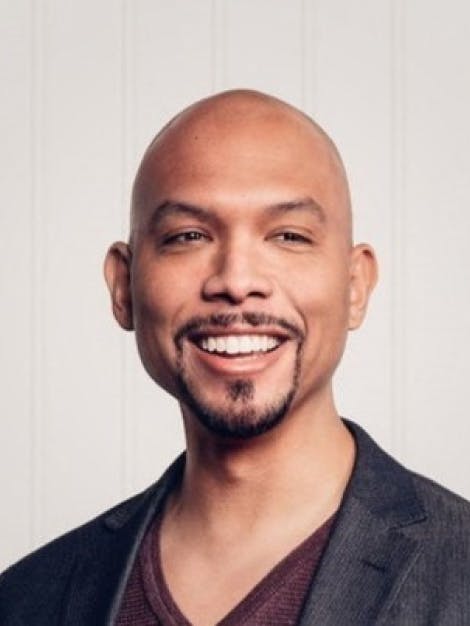Season 9 - Episode 2
Skills to Take You From PM to CSuite by Facebook VP of Product
In this episode, Nikhyl Singhal, Facebook VP of Product, gives a breakdown of 4 essential product skills in Director of Product, VP of Product, and CPO roles. Nikhyl tackles big questions like: How is a manager different from a director, or a VP, or a CPO? And what specific skills do you need to build to reach the career heights you want?

Career development for Product Managers is a subject I’m passionate about. This topic is related to one of the most common things I hear from the Product Managers I encountered which is, how do you get to the next level? And many of them aren’t even clear on what it means to be a Director, or Vice President, or Chief Product Officer.
I’d like to talk through what I’ve learned from these different levels. And does it even make sense for you? Is this the next step in your career? Take a moment and think through: what is your career path over the next five and 10 years?
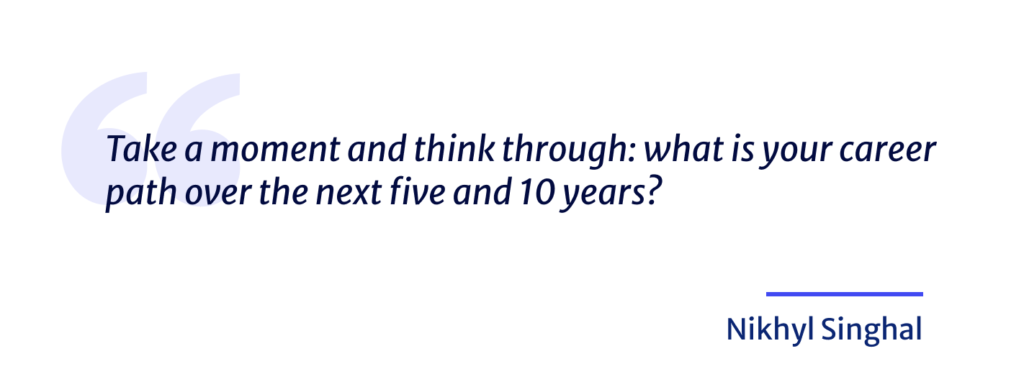
We get oftentimes so focused on what’s next, what does promotion look like, what’s the right level, am I at the right company? But if you think through five years or 10 years from now and then think about, are the steps and changes that I’m making in the next few years leading me to that destination? That’s really a career plan, and you want your next step to fit into that sort of long-term plan.
Oftentimes that does mean, I aspire to be an executive. There are different executives at different companies, but there are some common patterns I’ve seen between Director, or Vice President, and Chief Product Officer. And I’ll explain what your boss is doing and what their boss is doing, and what those skills look like. There’s a lot of information here and I’ll try to distill it down, but you can find more details on my Medium.
I want to introduce myself. My name’s Nikhyl Singhal. I’ve been in the tech industry for about 20 years. My career is sort of shaped into two chapters. My first chapter leaving school was really focused on startups. It was the mid-nineties and the internet was just getting born. I really wanted to enjoy the founding-type adventure. So I joined a company, I founded an early dotcom, and then eventually became a co-founder of two companies. One that I was a CEO of, which was Cast Iron Systems, which was in the enterprise side of the world. That was eventually acquired by IBM.
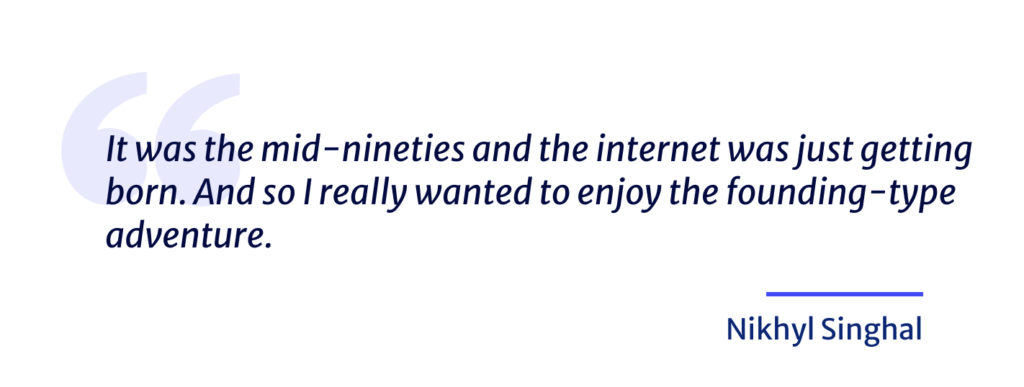
Then I went on to do the same thing again at a company called Say Now, very different. A kind of “voice Twitter,” if you will. That company was acquired by Google. And that really started the second chapter of my career.
That chapter was really three executive roles in Product Management, one where I led two new initiatives on the product side: Hangouts and Photos. After four years at Google, I made a four-year change to Credit Karma, which was a hypergrowth company. It had about 200 people when I joined. I was the product leader for the organization and built out the Product Management team and expanded the product lines from one free credit score to a number of different products.
Our goal was to become the money button on the phone, if you will. And that led to a team of around 75 people in both product and design. The company was about 1200 when I left. So it went through a nice growth spurt. And I ended up joining Facebook to lead the Facebook apps newsfeed.
Part of the reason I thought this would be a good topic for me, is that I get a chance to really interact with lots and lots of Product Managers. I’ve worked with them, managed them, learned from them, and then I end up coaching a lot of them as one of my hobbies. I hear this constantly: how do you get to director? How do you get to VP, or Chief Product Officer?
And because I held the roles at different scales, I thought it would be worth sharing what I’ve learned. These titles can be confusing. I want to normalize as much as possible. I’ll start by saying that Product Management means lots of things to lots of different people, and it changes a lot depending on the company you’re in. But the primary thing that I would note is that Product Management gets more complex the more products a company has, and the more people that are involved in it.
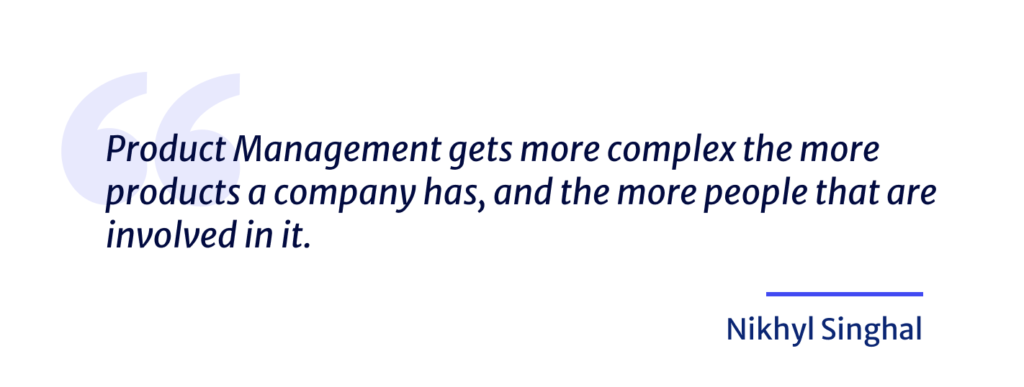
This picture that I’m really fond of illustrates the point. If you look at the sort of the generations of companies that go by, companies start out trying to find product fit. That’s that drunken walk stage. Then they find something that works and they make sure it doesn’t go out. Everyone’s standing around the fire, hoping that the smoke starts to stay as a small burn. And then when they get to hypergrowth, it’s like gasoline’s getting thrown on it, companies really, really building value. And then when you get to scale, you’re the market leader.
I like this because it has a lot to do with the different types of Product Management that exists at these different phases. If you were to come to me and say, Oh, I got this director role at this Series A company, and I’m trying of choose between that and a director role at a company like a Facebook or Google. Those are just very different, they’re apples to oranges comparison.
So titles don’t really mean anything when you’re comparing across different phases. In fact, a VP at a late stage company, like a Google is probably very different than a VP at a hypergrowth. To make things simple, a VP at a hypergrowth growth company—these are the companies like the Slacks and the Pinterest and the Ubers of the past—those companies look a lot like directors at scale. Because they end up doing some of the same types of things, and their compensation tends to be pretty consistent.
So when I refer to Director, VP, or CPO, I’m really heading towards the later stage companies. And that way we can compare and you can do your own translation as we go through this. There are four areas that I want to touch on when I think about the distinctions between these roles: Product scope, trust & collaboration, team building, and strategic skills. All Product Managers end up having to think through these areas, but I pulled these four out because they’re just so different and they beg different skills to come from the candidates.
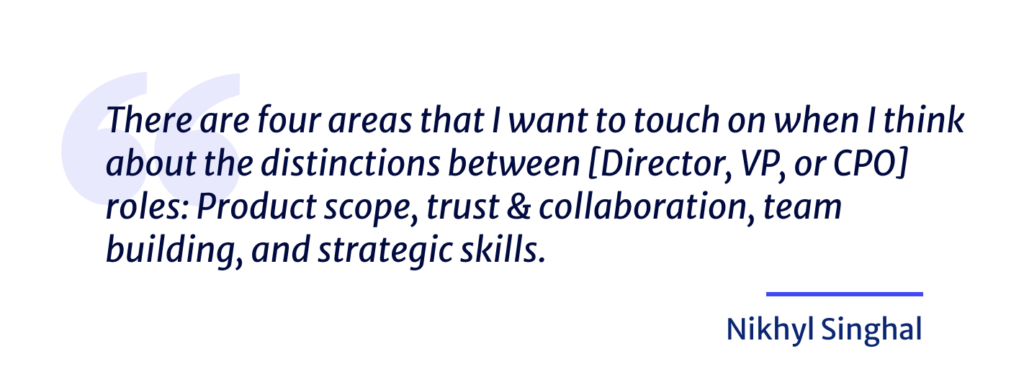
I’ll start with product scope. This one’s probably the easiest to understand. Product scope for me starts out as director. I’m assuming that most of you are at that senior IC or management level. Your director is probably your boss and or perhaps your boss’s boss, depending on where you are in your career.
And that director usually owns a pretty well-defined area of the product. And so they’re almost like the quote-unquote CEO of a well-defined product that exists in the marketplace. For me personally, that was owning this new product called Hangouts. And then the product that we now call Photos. Those are well-defined arenas, and directors are typically in charge of those arenas unless they’re very, very large.
That’s the starting point for scope. When you become a VP, you’re essentially collecting a series of these together. So you own the suite of products or a complete product line. So if you think about your Facebook app, the newsfeed has got a bunch of products that are embedded in there. Stories, commenting, how postings are created. They’re all big product areas that sit inside of this product line that Vice President would own.
And then a Chief Product Officer usually does not have another peer in product. Usually they’re in charge of the entire set of company products. That’s my experience when I was owning the product line at Credit Karma.
Now, the main thing that I want everyone to take away from this is that, in order to get this additional breadth, it’s a little bit like climbing up a mountain. I like this analogy because it illustrates things pretty nicely. When you’re at the bottom of a mountain, at that valley, you’re really clear on what’s on the ground. You can see exactly every detail. And then what happens when you get promoted, you start going up and scaling that landscape, to the point that eventually you’re at the top.
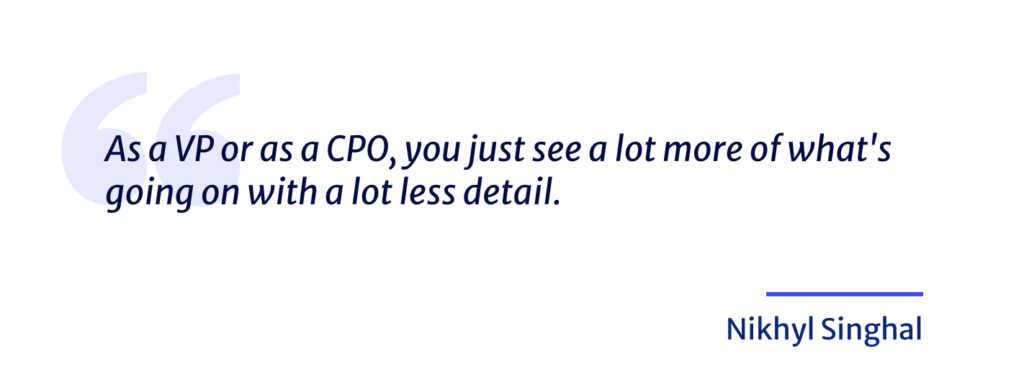
Now what you end up realizing is that as a VP or as a CPO, you just see a lot more of what’s going on with a lot less detail. And so the skill to master is: How do you achieve this breadth by sacrificing depth? Where people struggle is that they don’t have the skill to let go and sort of make decisions with less information. And when you’re in that stage, you end up finding yourself working harder and harder and harder. So where you end up burning out is at that Director and VP level where you just literally cannot continue to go forward because you don’t know how to give up and use, say, 20% of the information to make 100% of a decision.
That’s why scope is the most obvious, because you see people have more and more of it, and the skill that you have to master is the ability to sacrifice your depth. What’s hard is that what’s gotten you here is your ability to master the details. You know every detail, exactly the things that are coming in the next release, exactly why the design is the way it is, why the technical challenges are the way they are, what the constraints are, and what’s coming.
When you have more, you just can’t have that unless you just work all the time and never get sleep and that’ll eventually burn you out. So this is one of the more telling aspects to determine, how refined is this skill? The ability to make decisions with low information really dictates how far someone can go up the ladder.
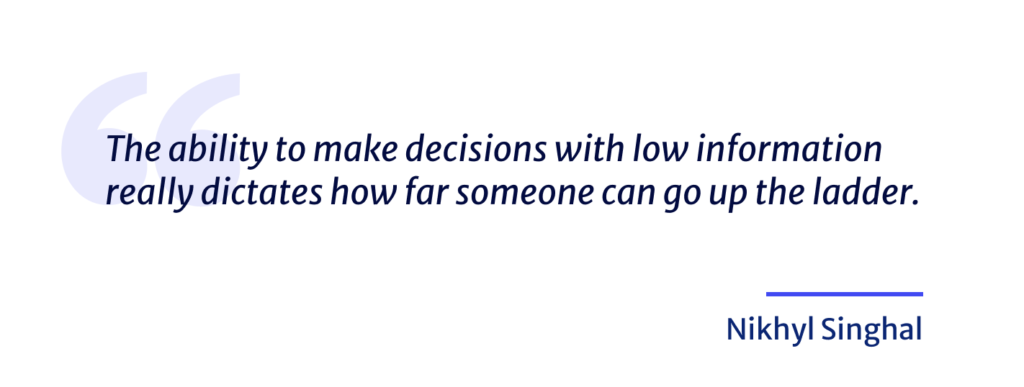
Trust and collaboration is related to this. One of the things I love about Product Management is that it’s collaborative. It’s a team sport, if you will. And yet the focus of who you have to build trust with changes dramatically depending on your level. When you’re a director, your goal is to focus inward on your own product team, as much as possible. You’re really measured on this ability to trust that team so you can make decisions with less information. And that delegation is around your inward team.
As a VP, for the first time you’re spending as much time talking to other leaders and other products as you are with your own team. So it’s a pretty distinct point of focus, where you say: I not only need to make sure that the product below me is working, but I have to make sure the other teams are actually understanding what we’re doing.Oftentimes I’m working with those other teams as much as much as my own team. And I’m measured on my ability to peer with another person who’s at my level.
That’s a different type of work. And often the people that are in those other arenas are product people. They perhaps have totally different ways of working. They have different cultures, they have different ways of building.
Certainly, at Facebook, as a family, we have lots of partnership at my level at the VP level with Instagram or with WhatsApp. And we’re trying to understand, how do we work together and partner together as much as possible. In that process of working across, you have to understand that these teams have been built from different people.
They have different cultures, they have different sizes, they have different processes. The skill is less trying to make sure that you’re pulling back and giving the right amount of space to your team. It’s really about understanding how to work in partnership with other product areas, which run similarly but differently.
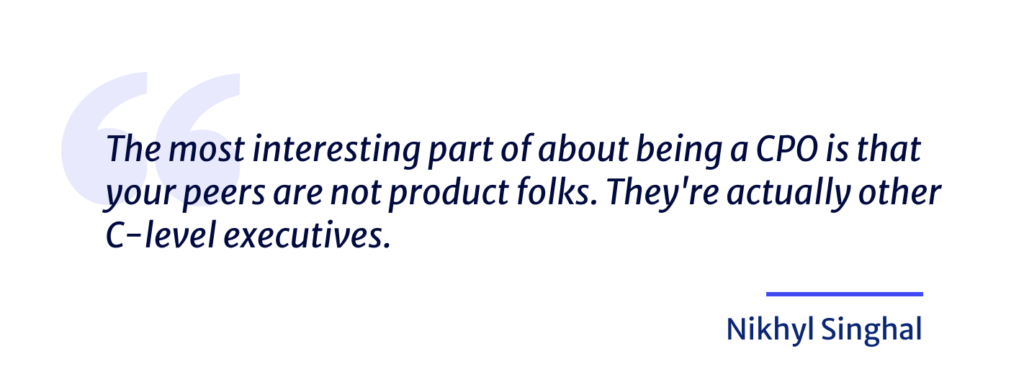
And lastly, the most interesting part of about being a CPO is that your peers are not product folks. They’re actually other C-level executives like the person that leads sales, marketing, HR, finance or legal. That partnership means that they are not at all brought up in your same value system and perhaps the same expertise and background. They may not even be from tech. They may be completely different types of leaders and mindsets and their teams are going to be run very differently.
Yet you’re measured not only on how well you build your own product, but how well you can work with those executives who are quite different than you. Most people would say, well, that’s normal. When you get to a senior level, your peers are no longer in your own function. But the difference is that in product, everybody has an opinion on product.
I think you’ve probably noticed that as a Product Manager, but boy, everyone not only has an opinion, but they have a tightly held opinion on how the product works. Because it has a huge impact on how they do their job, which is not the case in reverse. You may not have a tightly held opinion on how finance works or how the sales team works or what marketing does, but believe me, they probably do have a point of view.
Your challenge is that you have to set expectations that are realistic, and knowing that the person doesn’t come from your background and is not an expert in product. And so that process, that collaboration, is necessary. But boy, is it a totally different sometimes even exhausting skill compared to working with peers who do come from product, but may run different styles of groups and organizations versus your own team who report to you who actually are essentially trying to build product in the same direction as you’re guiding them. The distinction here is so significant because of the level and who you have to partner with and build that trust with.
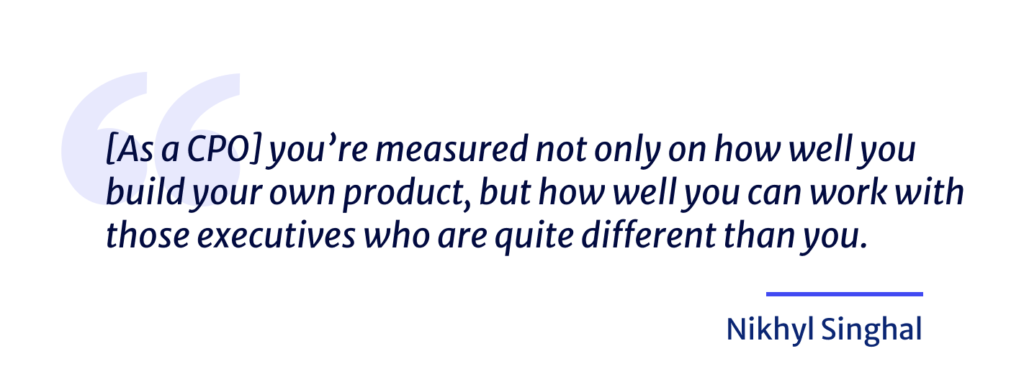
The next area is around team. We’ve touched a little bit about this, but you’ll start to understand how distinct the skills are as you climb the ladder. As a director, your goal is to influence the people that are in your team, the ICs and managers. Most directors have managers, which then have small teams underneath them. Most directors also have a few ICs that are senior that report to them. That’s a traditional model, certainly at scale.
This is why it’s closer to how VPs work in slightly smaller companies, because the size of team in this case is usually half a dozen to 20 people, which is usually the product size you split across two or three groups in a hyper scale.
The goal, and this is something that I talk pretty openly about with my own team, is that when you’re a manager, your goal is to teach Product Management to the people underneath you, and the ICs in particular.
When you’re a director, you have to have a mindset shift of not just teaching Product Management to your ICs, but you have to learn how to teach management to your managers. And often the skill is radically different. And again, it has a little bit to do with letting go and gripping the steering wheel at just the right level of strength so that the manager can continue to keep it in motion under some guidance.
But the challenge here is that it’s not teaching Product Management, it’s actually teaching management. And that means you’re telling people how to career grow the people underneath them, how to run meetings, how to understand career and teach that. How to work on things like comp and calibration and promotions. This process of teaching a totally new skill is a big change between manager and director.
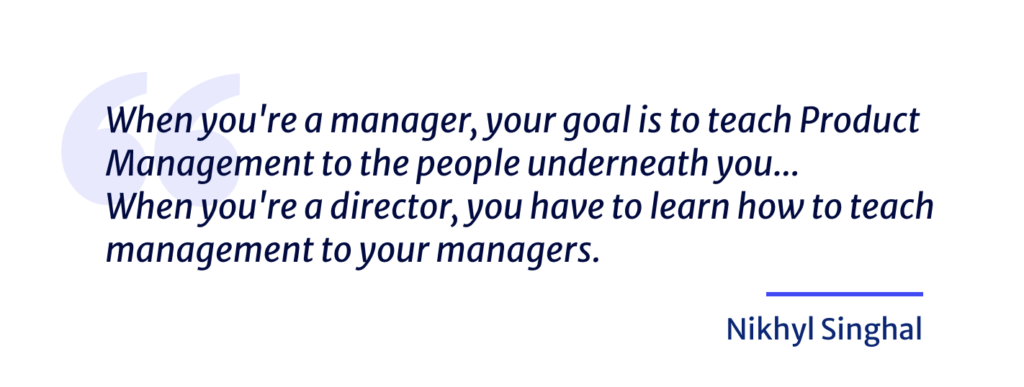
As you move to VP, you of course have now directors that are underneath you and many directors have that CEO mindset. So they’re quite capable of running small or maybe even medium-size companies. You’re in another complete change, where it’s not teaching management, it’s really recruiting and building up executives.
Now you think about your team as a whole. You’re looking at the identity of the team and you’re thinking, I have two directors who are strong in this area, but I need to go off and build something new. I’ll give you an example. I was in a product team once where I joined and the team was really good at execution, but they weren’t in a position to go build new things because they were so good at executing and incrementing and growing what’s working. They just didn’t have the skill to go out and create something new.
Now it doesn’t mean that anything has gone bad. It’s just that as a VP in this example, my interest is now adding new skills to the team so that both things exist, the ability to continue to increment and grow and scale, and the ability to have this new type of skill that was missing.
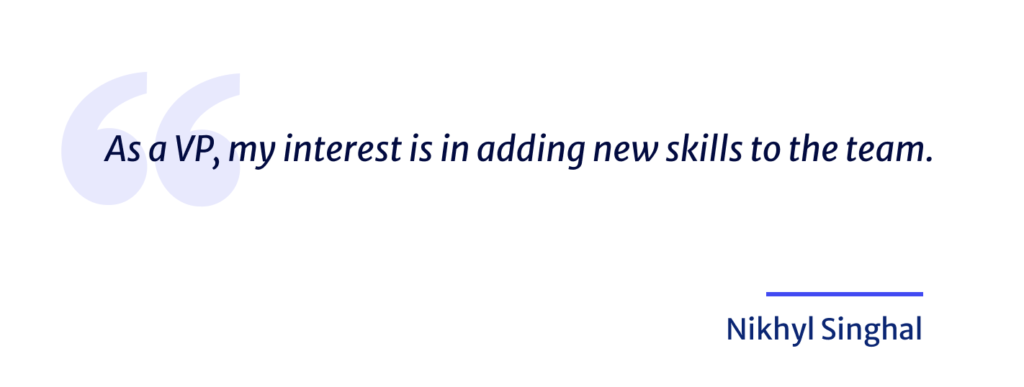
In addition, I would say that you also have to diversify the team in terms of makeup. Sometimes the same style of people have been recruited. And now your goal is to go in and say, Maybe I need folks that are more creative that have maybe less tenure, because we want new ideas. Perhaps the team has been very data and analytical. And so we’ve only gotten one style of mindset in the team.
Perhaps you end up like looking at the gender of your team and saying, We’re mostly male, we’re mostly female. Or we realize that we haven’t really matched the customer base, where our customers are much more broad in nature, but we tend to have only one type of Product Manager.
And so you need to diversify the identity of the team. But you also need to do that through recruiting and retaining the executives that exist, and understand the process. Here you are actually setting how reviews are done. You’re setting, What is the currency of value? Is it a metric? Is it entrepreneurship? What is the quality of things like communication? So VPs have a lot of distinction because they’re setting how Product Management is done in their area, as well as shaping the team.
When you get to CPO, it’s more of the same, but you’re now looking at the entire company’s culture. And you might be saddled with being measured on, Did you end up introducing and innovating in new products?
VPs need to bring this innovation notion and process needs to scale across the entire company. And the skills you need to bring in may need to be totally new to the company as a whole. You start out teaching management and then you end up thinking through how to recruit a diversified set of executives. And then you do a diagnosis on the holes that are missing in the organization and thoughtfully end up working through those.
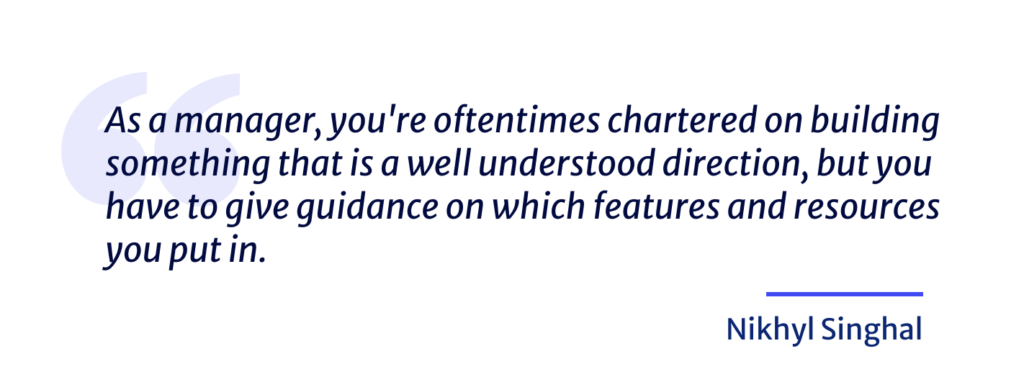
The last area that I’ll touch on is around strategy. Strategy comes up a lot. Everyone says that, Hey, once you become a director, your goal is to avoid execution. You have to now point where we’re going. As a manager, you’re oftentimes chartered on building something that is a well-understood direction, but you have to give guidance on which features and resources you put in.
And then what’s the sequence? I push on this a lot, which is lots of times people are clear as a director of here’s what good looks like in a year, but they don’t have the next quarter and the plan of where they go and how they scale that mountain. So I really like the notion of sequencing as well as direction for directors.
I think that for VPs, on the other hand, it’s a little bit trickier. With VPs, you’re now trying to represent the consistency and cohesiveness of the whole product line. You’re working cross with other VPs and other organizations. But often if you just nail your product area, when customers look at your product, they see one VP’s product is in one tab, another VP’s product’s in another tab, and so on. And they’re like, Well, I don’t understand how this meets my needs.
So your vice presidents need to work through and say, Hey, we need to partner up to make sure that complicated projects that may need to be delivered across many different groups actually make progress.
It could be things like technical platforms. It could be one common customer view. It could be a complex integration on the front page of your product, but generally these silos actually really get in the way of making the product work. If you just have your directors nail their individual areas, you’ll get this sort of patchwork of products.
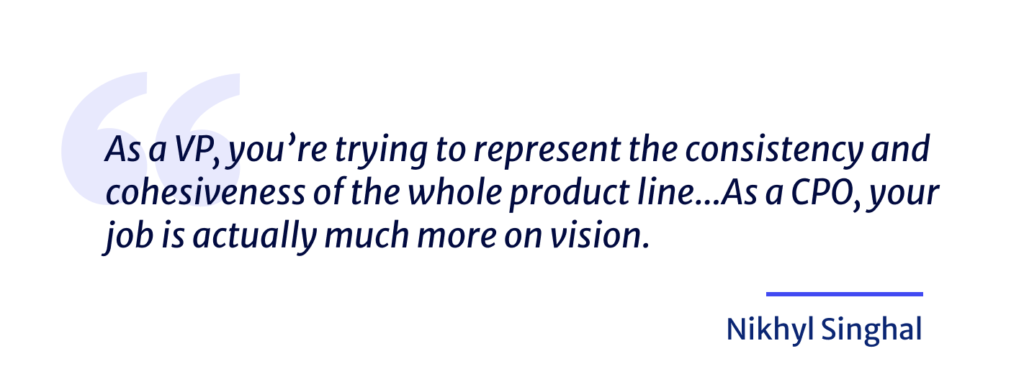
As a CPO, your job is actually much more on vision. So the strategy is less around cohesiveness of the product line, more around what’s happening tomorrow. And a lot of times it’s the storytelling and the narrative that needs to be a plus here.
Oftentimes your board, your founders, your CEO, have had a strong point of view on where the company will go in three, five years. But that won’t just be a product vision. That’ll be a company vision. And then you’re going to have your directors who are really clear on their roadmaps, why they’re achieving what they want, your VPs connecting all of the dots.
And the CPO’s left with, Well, I know where the product’s going go in the next six to 12 months, and I see what the vision of the company is. My strategy is to storytell how these two things connect. How will the product get there? And then how will the changes I’m making in the product team ultimately get the team to that strategy and vision. It’s that product team story, as well as the product story, which lends itself to that vision.
This has been a quick 30 minute chat around how I think about career. I do think that the skills are super different between Directors, VPs, and CPOs, and maybe the most important lesson is that not everyone will be capable of getting to these levels, but more importantly, not everyone loves the actual practice of explaining to the Head of Marketing exactly how product works or teaching management. Versus just getting it and building it themselves. Or working through strategy and vision and trying to connect between these two relatively fixed targets, or career shaping other individuals.
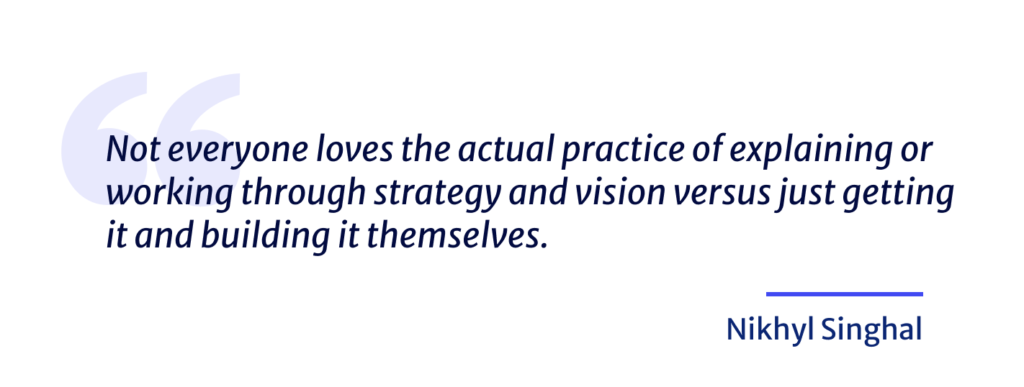
This is one of the areas that I would ask you to think about: as you look at the skills that I’ve laid out here, how much of that is connected to your current skills? How much of that is connected to your definition of joy? How much of that is available in one or three or five years?
That should help you understand, What’s the job like for that boss? What’s the job like for the boss’s boss? And ultimately, how do you build a long-term career plan?
Listen to our episodes on your favorite platform
Stay tuned for new episodes
By sharing your email, you agree to our Privacy Policy and Terms of Service



